#HealthCampaigns
Explore tagged Tumblr posts
Text
Digital Citizenship, Algorithmic Bias & The Body Modification Crisis
🧠 How Social Media Shapes Our Perception of Beauty Does social media make us change how we look? Platforms like Instagram and TikTok prioritize visually appealing content, reinforcing unrealistic beauty standards. As a result, digital citizens feel increasing pressure to conform to "aesthetic templates"—leading to rising cosmetic surgeries, digital body modification, and self-esteem issues.
But who decides what beauty is? Algorithms.
This post explores how algorithmic bias shapes body modification trends, suppresses diverse beauty, and impacts digital citizens' autonomy over their identities.
Algorithmic Beauty Norms: Who Gets Seen & Who Doesn’t?
💡 Algorithms define beauty. Content with Eurocentric features, clear skin, and specific body shapes is promoted (Duffy & Meisner, 2022). Other appearances? Shadowbanned.
🔍 Case Study: TikTok’s Algorithmic Suppression of “Unattractive” Content
Internal reports from TikTok revealed moderators were told to suppress content from creators with “ugly facial looks” and “abnormal body shape” (Ghaffary, 2021). This discriminatory moderation policy shaped visibility for millions, showing how beauty standards are not just cultural—they’re coded into social media itself. 🔹 Aesthetic Labour: The Price of Visibility
Influencers engage in aesthetic labor by altering appearances to gain visibility (Marwick, 2013). More attractive = higher engagement = better algorithmic ranking (Becker, 2017). 💡 Result: Those who don’t fit these beauty norms are less visible, less marketable, and less likely to succeed in the creator economy.

The Rise of Cosmetic Surgery & Body Modification on Social Media
Why are influencers getting more surgery? The rise of digital beauty standards makes real-world features seem "flawed."
Filters & FaceTune: The “Instagram Face” Phenomenon
Studies show Snapchat Dysmorphia is driving cosmetic surgeries (Dorfman et al., 2018). Filters reinforce idealized facial features, making unfiltered faces appear "worse" by comparison. 2019 Plastic Surgery Statistics: 72% of surgeons reported clients wanting procedures to look like their filtered selfies (ASPS, 2019). 📌 Case Study: Brazil's Boom in Cosmetic Surgeries (2022)
Brazil became the world leader in cosmetic procedures, with 1.5 million surgeries per year, driven by influencer culture & algorithm-driven beauty norms (Adams, 2022). TikTok trends like #BBLTransformation & #GlowUpChallenge fueled unrealistic expectations. 💡 The problem?
It’s not just influencers modifying their bodies—it’s everyday users who feel forced to "catch up." Plastic surgery advertising on TikTok & Instagram normalizes body modification.
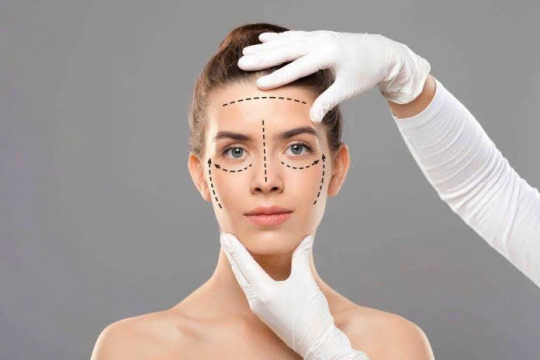
🚨 Algorithmic Discrimination & Marginalized Identities
🔹 Who gets suppressed?
Black creators reported lower visibility & engagement on TikTok compared to white influencers (Ghaffary, 2021). LGBTQ+ content is disproportionately shadowbanned, affecting queer influencers' ability to monetize their platforms (Duffy & Meisner, 2022). Tattooed & pierced influencers struggle for visibility, as platforms associate them with “non-mainstream” aesthetics. 📌 Case Study: Instagram’s 2021 "Racial Bias" Controversy
Black creators noticed their content was being removed while similar white-led posts remained. Instagram responded by pledging to fix racial bias in AI moderation (Frenkel, 2021). 💡 Bottom line: If beauty standards are coded into social media, marginalized identities will always struggle for visibility.

How Can We Disrupt Algorithmic Beauty Pressures?
Algorithmic Transparency
Platforms must disclose how they rank beauty content (Duffy & Meisner, 2022). 💡 Promote Inclusive Beauty Standards
TikTok & Instagram should support body-positive content, not suppress it. 💡 Educate Digital Citizens
We need better digital literacy programs to teach users how social media skews beauty standards. 💡 Support Marinalized Creators ✔️ Follow body-positive influencers. ✔️ Engage with creators outside of mainstream beauty standards. ✔️ Push platforms to audit their algorithms for bias.

💬 What Do You Think?
🔥 Is social media shaping how people view beauty? 🔥 Should platforms be responsible for algorithmic bias in beauty standards?
Comment below & reblog to continue the discussion!
📚 References
Adams, J. (2022). Bodies of Change: A Comparative Analysis of Media Representations of Body Modification Practices. Sociological Perspectives, 52(1), 103–129. https://doi.org/10.1525/sop.2009.52.1.103
American Society of Plastic Surgeons (ASPS). (2019). Plastic Surgery Statistics Report. https://www.plasticsurgery.org/documents/News/Statistics/2019/plastic-surgery-statistics-full-report-2019.pdf
Duffy, B. E., & Meisner, C. (2022). Platform Governance at the Margins: Social Media Creators’ Experiences with Algorithmic (in)visibility. Media, Culture & Society. https://doi.org/10.1177/01634437221111923
Frenkel, S. (2021). Instagram's Racial Bias Problem. The New York Times. https://www.nytimes.com/2021/04/21/technology/instagram-racial-bias.html
Ghaffary, S. (2021). How TikTok’s hate speech detection tool set off a debate about racial bias. Vox. https://www.vox.com/recode/2021/7/7/22566017/tiktok-black-creators-racial-bias
0 notes
Text
Week 7: Digital Citizenship, Algorithmic Invisibility & Health Campaigns in the Age of Instagram
This week’s reading by Duffy & Meisner (2022) invites us to critically examine how algorithmic (in)visibility shapes the experience of social media creators. Their research shows that platform governance, especially through opaque algorithms, systematically marginalizes creators who don’t conform to dominant cultural templates—impacting visibility, engagement, and even self-perception.
🎯 Algorithmic Invisibility: Who Gets Seen and Who Doesn't?
Duffy & Meisner (2022) highlight how marginalized creators—especially women, queer, and transgender influencers—struggle with algorithmic invisibility. This occurs when platform algorithms deprioritize or “shadow-ban” content that challenges heteronormative, Eurocentric beauty ideals. Reading this, I realized how familiar this feels on platforms like Instagram and TikTok, where filtered “mainstream beauty” content often trends while alternative representations are buried.
This concept ties directly to Mavroudis’ (2023) lecture, which discusses how microcelebrity culture is built on conforming to aesthetic templates—specific poses, body modifications, and gendered visual cues that appeal to the platform’s engagement-driven logic. These templates aren’t neutral; they reinforce pornification (Drenten & Gurrieri, 2019) and the monetization of the “ideal body” (Carah & Dobson, 2016).

🩺 Health Consequences: Body Image & Public Health
The lecture also highlights the public health risks associated with these online dynamics. For example, users engaging in what Mavroudis calls fame labour often develop identity dissonance—the psychological gap between their curated online self and their offline body. This can fuel issues like Body Dysmorphic Disorder (BDD), as people chase unachievable aesthetic ideals amplified by influencers and even some health campaigns.
Interestingly, Dorfman et al. (2018) found that most cosmetic surgery-related posts on Instagram were promotional, not educational. This made me reflect on how “public health messaging” is increasingly blurred with influencer marketing—sometimes reinforcing unrealistic body expectations under the guise of wellness.
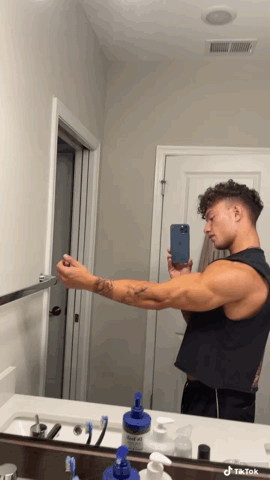
💡 Independent Research – Algorithmic Bias in Cosmetic Trends
Expanding on this, I looked at Wen et al. (2015) who analyzed YouTube cosmetic surgery content. Their study showed that videos often frame cosmetic enhancement as empowerment, yet overwhelmingly cater to heteronormative beauty standards. This parallels Duffy & Meisner’s point about algorithmic invisibility, where only specific beauty narratives gain traction.
Personally, I think this raises a key question: are health campaigns on social media truly empowering, or are they entangled in the same platform logic that marginalizes diverse bodies?
"The structures of platform governance systematically render certain creators invisible, reinforcing offline hierarchies in online spaces.” (Duffy & Meisner, 2022, p. 2)
✨ Reflection: Rethinking Digital Citizenship
For me, this week reframes digital citizenship beyond participation. It’s about critically engaging with platform cultures, resisting algorithmic bias, and demanding accountability from both influencers and tech companies. As users, we co-create digital spaces, but as Duffy & Meisner argue, we also navigate infrastructures that often replicate offline hierarchies.
💬 Your turn: Have you noticed how some types of bodies or identities seem more “visible” on your social feeds than others? How should we challenge this as digital citizens? 💬👇
References
Carah, N., & Dobson, A. (2016). Algorithmic hotness: Young women’s “promotion” and “reconnaissance” work via social media body images. Social Media + Society, 2(4), 1–10. https://doi.org/10.1177/2056305116672887
Dorfman, R. G., Vaca, E. E., Mahmood, E., Fine, N. A., & Schierle, C. F. (2018). Plastic surgery-related hashtag utilization on Instagram: Implications for education and marketing. Aesthetic Surgery Journal, 38(3), 332–338. https://doi.org/10.1093/asj/sjx104
Drenten, J., & Gurrieri, L. (2019). Sexualized labour in digital culture: Instagram influencers, porn chic and the monetization of attention. Gender, Work & Organization, 26(1), 41–66. https://doi.org/10.1111/gwao.12312
Duffy, B. E., & Meisner, C. (2022). Platform governance at the margins: Social media creators’ experiences with algorithmic (in)visibility. Media, Culture & Society. https://doi.org/10.1177/01634437221111923
Mavroudis, J. (2023). Digital Citizenship and Health Campaigns. Lecture presented at MDA20009: Digital Citizenship. Swinburne University.
Wen, N., Chia, S. C., & Hao, X. (2015). What do social media say about makeovers? A content analysis of cosmetic surgery videos and viewers’ responses on YouTube. Health Communication, 30(9), 933–942. https://doi.org/10.1080/10410236.2014.889288
#digitalcitizenship#algorithmicinvisibility#bodyimagecrisis#aesthetictemplates#healthcampaigns#microcelebrity#famelabour#feministmedia#MDA20009#digital communities
0 notes
Text
Lessons from the COVID-19 Response: What Public Health Campaigns Can Learn
Data-Driven Decision Making: Evaluating Impact Finally, the pandemic highlighted the necessity of data-driven decision-making in public health campaigns. As various strategies were implemented globally, it became clear that evaluating their effectiveness was essential for future planning. The use of data analytics allowed health officials to assess which messages resonated most with different demographics and adjust campaigns accordingly. Thus, it is imperative to understand which communication channels were most effective in reaching specific populations enabled more efficient resource allocation. According to Nerindo, Jamari and Wok (2021), different communication channels were preferred by specific demographics, such as younger adults relying on social media while older individuals favored television and online newspapers. This understanding enabled more targeted resource allocation and improved the effectiveness of public health campaigns. Public health agencies should continue to invest in data collection and analysis tools to inform their strategies, ensuring that campaigns are responsive to emerging trends and community needs. Conclusion: Moving Forward with Lessons Learned The COVID-19 response has provided invaluable insights for future public health campaigns. By focusing on tailored messaging, community engagement, combating misinformation, and leveraging data-driven decision-making, public health officials can enhance their effectiveness in addressing not only pandemics but also other pressing health issues.As we move forward into a post-pandemic world, it is crucial that we apply these lessons learned to build resilient public health systems capable of responding swiftly and effectively to future challenges. By fostering trust, understanding community needs, and prioritizing accurate information, we can create a healthier future for all. Reference List Foundation, C 2020, ‘CDC Foundation Launches Crush Covid-19 Campaign to Meet Urgent Needs Caused by Pandemic’, CDC Foundation: Together Our Impact Is Greater, CDC Foundation: Together Our Impact Is Greater, viewed 31 November 2024, <https://www.cdcfoundation.org/pr/2020/crush-covid-campaign>. Hunt, I de V, Dunn, T, Mahoney, M, Chen, M, Nava, V & Linos, E 2022, ‘A Social Media‒Based Public Health Campaign Encouraging COVID-19 Vaccination across the United States’, American Journal of Public Health, vol. 112, no. 9, pp. e1–e4, viewed 1 December 2024, <https://pmc.ncbi.nlm.nih.gov/articles/PMC9382165/>. Nerindo, A, Jamari, J & Wok, S 2021, ‘The Effectiveness of COVID-19 Public Health Campaigns by the Ministry of Health Malaysia: an Exploratory Study in a University Campus’, Forum Komunikasi (FK), vol. 16, no. 1, pp. 1–25, viewed 1 December 2024, <https://ir.uitm.edu.my/id/eprint/49485/>. Papendick, K 2024, ‘How to Effectively Use Social Media for Public Health’, Social News Desk - Social Media Management, viewed 1 December 2024, <https://www.socialnewsdesk.com/blog/how-to-effectively-use-social-media-for-public-health/>.
0 notes
Text
Progress in Cardiovascular Disease Management in Bangladesh

Progress in cardiovascular disease management in Bangladesh has become a significant concern worldwide, including in Bangladesh. In recent years, this South Asian nation has made remarkable strides in the management and prevention of cardiovascular diseases, significantly improving the overall health and well-being of its population.
The Growing Burden of Cardiovascular Diseases in Progress in Cardiovascular Disease Management in Bangladesh
Bangladesh, like many other developing countries, has been grappling with an increasing burden of cardiovascular diseases. Lifestyle changes, urbanization, and an aging population have contributed to the rising prevalence of heat-related illnesses, making it imperative for the nation to develop effective strategies to address this growing concern.
Enhanced Awareness and Prevention
Enhanced awareness and prevention of cardiovascular diseases have emerged as vital components in the management and mitigation of this widespread health concern in Bangladesh. This positive transformation is the result of various concerted efforts that have significantly impacted the country's healthcare landscape. Key to this transformation has been the remarkable increase in awareness among the citizens of Bangladesh. Public health campaigns, educational initiatives, and the tireless efforts of healthcare professionals have all played pivotal roles in this regard. These combined efforts have been instrumental in educating people about the risk factors associated with heart diseases. Public Health Campaigns Over the years, Bangladesh has witnessed the implementation of effective public health campaigns aimed at raising awareness about cardiovascular diseases. These campaigns use various media platforms, including television, radio, social media, and print, to disseminate information about the causes, symptoms, and prevention of heart-related conditions. They often feature heartwarming stories of survivors and testimonials from healthcare experts, making the information relatable and impactful. Educational Initiatives Education has been a cornerstone of the efforts to combat cardiovascular diseases in Bangladesh. Educational institutions, both formal and informal, have actively engaged in educating students and the general population about the significance of heart health. Schools, colleges, and universities have incorporated health education into their curriculum, ensuring that young people receive comprehensive information from an early age. Furthermore, workshops, seminars, and community health programs provide a platform for individuals to acquire knowledge about risk factors such as an unhealthy diet, a sedentary lifestyle, smoking, and high blood pressure. Empowering individuals with knowledge is considered the primary means of defense against heart diseases. Healthcare Professionals The healthcare community in Bangladesh, comprising doctors, nurses, and other medical practitioners, has taken a prominent position in the fight against cardiovascular diseases. They fulfill a vital function. In both the treatment of those affected and in the realm of preventive healthcare, healthcare professionals play a dual role. They not only provide routine health check-ups but also offer valuable guidance to patients concerning necessary lifestyle changes. Additionally, when required, they prescribe medications. Furthermore, these dedicated professionals are actively engaged in advocacy efforts, underlining the importance of regular health assessments, promoting healthy living, and encouraging adherence to prescribed treatment plans. Community Engagement Another important aspect of enhancing awareness and prevention is community engagement. Local organizations and NGOs collaborate with healthcare professionals to organize health camps, mobile clinics, and health fairs in rural and urban areas. These events provide free health assessments and consultations to underserved populations, emphasizing the significance of early detection and preventive measures. The cumulative effect of these efforts has led to a noticeable shift in the perception of cardiovascular diseases in Bangladesh. Citizens have now improved their ability to recognize the warning signs, understand the impact of lifestyle choices, and take proactive steps to protect their heart health. As awareness continues to grow, we anticipate that the burden of cardiovascular diseases will lessen, resulting in a healthier and more resilient society. Lifestyle Modifications Individuals are now more aware of the importance of a healthy lifestyle. Regular exercise, a balanced diet, and stress management techniques are being increasingly adopted to reduce the risk of heart diseases. This shift towards a healthier way of life has significantly contributed to the decline in the number of cardiovascular cases. Early Detection and Diagnosis Advancements in medical technology have facilitated early detection and diagnosis of cardiovascular diseases. Regular health check-ups, ECG screenings, and access to modern diagnostic tools have helped identify potential issues at an earlier stage, enabling timely intervention.
Access to Quality Healthcare: Progress in cardiovascular disease management in Bangladesh
Bangladesh has made substantial investments in its healthcare infrastructure. Improved access to quality healthcare services, well-equipped hospitals, and skilled medical professionals have all played a pivotal role in enhancing cardiovascular disease management. Specialized Cardiac Care Centers The establishment of specialized cardiac care centers across the country has made a significant impact. These centers are equipped with state-of-the-art technology and staffed with experienced cardiologists, ensuring that patients receive the best possible care. Affordable Medication The availability of affordable medication has also been a game-changer. Patients can access essential drugs and treatments without breaking the bank, making it easier for them to manage their condition effectively.
Government Initiatives: Progress in cardiovascular disease management in Bangladesh
The government of Bangladesh has been proactive in addressing the cardiovascular disease epidemic. Various policies and programs have been initiated to improve public health and reduce the prevalence of heart diseases. Health Insurance Schemes The introduction of health insurance schemes has made healthcare more accessible to a larger section of the population. This has reduced the financial burden on individuals seeking treatment for cardiovascular diseases. Health Education in Schools Starting health education at the school level has been another progressive step. Teaching children about the importance of a healthy lifestyle and its impact on heart health is fostering a culture of prevention.
Future Prospects
The progress in cardiovascular disease management in Bangladesh is promising. With continued efforts, the nation is on track to further reduce the prevalence of heart-related illnesses and enhance the overall well-being of its citizens. The combination of awareness, prevention, access to quality healthcare. And government initiatives has created a comprehensive approach to tackling cardiovascular diseases.
Final Thoughts
In conclusion, Bangladesh has made significant strides in the management of cardiovascular diseases. By focusing on prevention, early detection, and improved healthcare access. The nation is well on its way to achieving better heart health for its people. These efforts demonstrate that with determination and concerted action. It is possible to overcome the challenges posed by cardiovascular diseases in a developing nation. Read the full article
#CardiovascularDisease#HealthCampaigns#HealthEducation#HealthInsurance#healthcarecommunity#Lifestyle
0 notes
Text
From lightning cable to type-c : Using Social Media to Supercharge Public Health Campaigns
Yup. You heard me right. No more of that radio, TV, newspaper nonsense, we're upgrading to that latest iPhone which uses the type-c, fast charge cable. Just kidding, we're actually using social media to boost public health campaigns. Social media is a game-changer for public health campaigns, opening up new ways to reach people especially the chronically online ones.
Now JUST A DISCLAIMER : This essay is gonna sound a little similar to my previous posting but that's not because I'm running out of creative juices. No. I will always have them flowing. However, I'll have to admit that some of my points will be similar since we are using social media to boost something again.
Back to my previous point, health organizations and community groups can get their messages across faster and engage with more diverse groups via socmed. Great! That's like 2 stones and 1 bird! Or is it 2 birds and 1 stone... Plus, creative formats like memes and influencer posts make health topics feel more relatable and relevant. But and but, of course there is a but - using social media effectively required thoughtful strategies, especially when it comes to tackling misinformation and ensuring campaigns actually resonate with the people. We're gonna dive into how social media can be used for impactful public health campaigns, including tips on working with influencers, building supportive communities, making content that's creative and engaging, and all the other good stuff...

1.The Power of Influencers and Memes
I'M BRINGING THE MEMES BACKKKKKK!!!!! That's cause influencer and memes are gold when it comes to boosting the reach of health campaigns. Partnering with influencers who are able to align with a campaign's message can amplify its reach and make the information stick (Kostygina et al. 2020). Influencers have already build the trust and connection with their followers, which is great for public health message that people need to take seriously. For example, Demi Lovato is a known advocate for mental health awareness, and she isn't shy to share that with her 145 million followers on Instagram (Zizzo 2024). When Demi shares health tips or personal experiences, it often feels more authentic and relatable, which makes people more likely to listen and engage with the content (in the form of likes, comments, shares, reposts, etc.)
Now, we talk about the memes. There is absolutely nothing terrible about them (maybe I'm just being biased)- they're easy to share, they make complex health issues feel approachable with a touch of humor, they make the suicidal thoughts go away... however, it's a balancing act. Go too far with humor, the message might get lost. Kostygina et al. (2020) remind us that keeping a sense of authenticity and relatability is key. However, if it's done well, memes and influencer partnerships can spark real great conversations about health in a way that feels fresh and organic.
Now I'm just gonna share a couple memes that tickled my funny bone during the pandemic.



All credit goes to Baltimore City Health Department for their creativity, sarcasm and slander towards anti-vaxxers.
2. Get the Creative Juices Flowing to Boost Engagement
Social media thrives on creativity itself. An analogy that I would give would be trees fighting for sunlight in the rainforest. To stand out among the other trees (other social media accounts), you have to be a little different, a little more... creative. Public health campaigns can take advantage of that creativity by curating content that resonates emotionally with the audience. Ashley & Tuten (2015) highlight the importance of using a mix of content formats- think interactive polls, visually striking infographics, or even videos that people want to watch and share. One way health campaigns can stand out is using user-generated content. This can be done by encouraging people to share into their own health stories using a specially curated hashtag. This can create a real sense of community and make health info feel more intimate and personal. This will definitely help with the reach and it will build engagement that sticks around for a while. As Ashley & Tuten (2015) found, the more a post resonates with people. they more people will engage with it. The outcome will be a health message that makes an impactful difference on the audience.
3. The Group Chat is Texting for More Support
Having things digitalized definitely makes a lot of things easier. Health groups can also be created virtually via social media platforms, and these digital health communities can become a safe space for people to come together and support one another, exchange tips, and learn about health topics in a non-judgmental environment basically like a drug rehab group. Ba & Wang (2013) explained that these groups are able to fulfill needs such as emotional connection, shared understanding, which will help drive up some positive changes with time. Social media makes it easier for users of different backgrounds to join these communities, whether they're dealing with chronic illness, trying to live healthier or just wanting to learn more about health topics (just a side note : this is wonderful because my current obsession is brewing kombucha and I've actually joined kombucha brewing groups on Facebook just to learn more from the aunties). For public health campaigns, joining forces with established health communities or creating targeted groups can be super effective. For example, establishing a cancer recovery rehab group in conjunction with an NGO that supports cancer. Campaigns that understand the value of these spaces often see higher engagement since members are already motivated and looking for support. Ba & Wang (2013) also observed that digital health communities can give people a sense of belonging, which in turn, helps campaigns foster a more sustained interest in healthy behaviour.
4. Turn on Waze Cause It's Time to Navigate Through These Misinformation and Audience Gaps
This point, I have spoken about as well previously, but I am here to address it once more since it's kinda crucial. I think the most common misinformation spread online was during the 2020 Covid-19 pandemic where aunties and uncles are spreading misinformation about various cures to covid (such as a certain health minister encouraging us to 'just drink hot water'). With information spreading like wildfire online, since it can be spread with just a couple clicks, it's just as easy for false health tips to reach the gullible users which may undermine public trust in reliable sources. According to Kanchan & Gaidhane (2023), campaigns should be transparent and back up their information with evidence or proven, legitimate, scientific research. Addressing misinformation head-on, maybe even in a Q&A format, can go a long way in building credibility. A great example would be the video posted by WIRED on YouTube, starring Dr. Ken Jeong. Dr. Ken would answer medical questions posted up by users on Twitter and he cleared a lot of health misunderstanding and myths through that simple video.
Aside from misinformation, there might be audience gaps at times as well. Campaigns need to understand their audiences to make sure their messages resonate. Ramanadhan et al. (2013) found that successful community-based organizations pay close attention to what their audiences care about and adjust the content accordingly. This is another great thing about social media- it's great for testing content, so if something isn't engaging people, you can quickly pivot and try a different approach. However, I understand that there are still those out there who have issued with access, not everyone has the digital literacy and tech access to engage with virtual campaigns equally. That's why, a great strategy would be working with the government or even non-profit organizations to help get the message out to those who aren't always online.
OKAY. We're kinda done here.
Social media has made it easier than ever to spread public health messages and connect with diverse audiences. Whether it's teaming up with influences, getting creative with content, or fostering supportive communities, there are a lot of great ways to use social media to it's full potential. However, it's important to still keep a close eye on challenges such as misinformation and make sure the campaigns are inclusive (CAUSE NO ONE GETS LEFT OUT). In the end, the most successful public health campaigns will be the ones that feel authentic, with solid information to back up, and it resonates with people they're trying to reach.
References
Kostygina, G., Tran, H., Binns, S., Szczypka, G., Emery, S., Vallone, D., & Hair, E, 2020, ‘Boosting Health Campaign Reach and Engagement Through Use of Social Media Influencers and Memes’. Social Media + Society, vol. 6 no. 2, viewed 9 November 2024, < https://doi.org/10.1177/2056305120912475 >.
Ashley, C & Tuten, T 2015, ‘Creative strategies in social media marketing: An exploratory study of branded social content and consumer engagement’, Psychology & Marketing, vol. 32 no. 1, pp. 15–27, viewed 9 November 2024, <https://doi.org/10.1002/mar.20761>.
Ba, S. and Wang, L 2013, ‘Digital health communities: The effect of their motivation mechanisms’, Decision Support Systems, vol. 55 no. 4, pp.941-947, viewed 9 November 2024, <https://doi.org/10.1016/j.dss.2013.01.003>.
Kanchan, S. and Gaidhane, A 2023, ‘Social Media Role and Its Impact on Public Health: A Narrative Review’, Cureus, vol. 15 no.1, viewed 9 November 2024, <https://doi.org/10.7759/cureus.33737?>. Ramanadhan, S., Mendez, S.R., Rao, M. & Viswanath, K 2013, ‘Social media use by community-based organizations conducting health promotion: a content analysis’, BMC public health, vol. 13 no. 1, pp.1-10, viewed 17 November 2023, <https://doi.org/10.1186/1471-2458-13-112
Zizzo, M. (2024). 10 Celebrity Advocates Raising Mental Health Awareness - Stigma Free Mental Health Society. [online] Stigma Free Mental Health. Available at: https://stigmafreementalhealth.com/blog/10-celebrity-advocates-raising-mental-health-awareness/.
1 note
·
View note
Text
The human side of chemotherapy.
Introducing a unique photo collection highlighting the emotional journey of chemotherapy. These images tell a story of strength and resilience, ideal for health-related brands, nonprofit organizations, and medical outreach programs.

Ready to partner with brands aiming for real impact!
#MedicalPhotography#CancerAwareness#AdvertiseWithUs#HealthCampaign#OncologyMarketing#VisualStorytelling
0 notes
Text
जारी है ‘स्वास्थ्य दल आपके द्वार’ अभियान, घर-घर जाकर हो रही रोगियों की जांच
#bhayajinews#SwasthyaDalaapkeDwar#HealthCampaign#DoorToDoorCheckup#CommunityHealth#RogiJanchAbhiyan#jaipur news
0 notes
Text
World Malaria Day PSD Template Free for social awareness
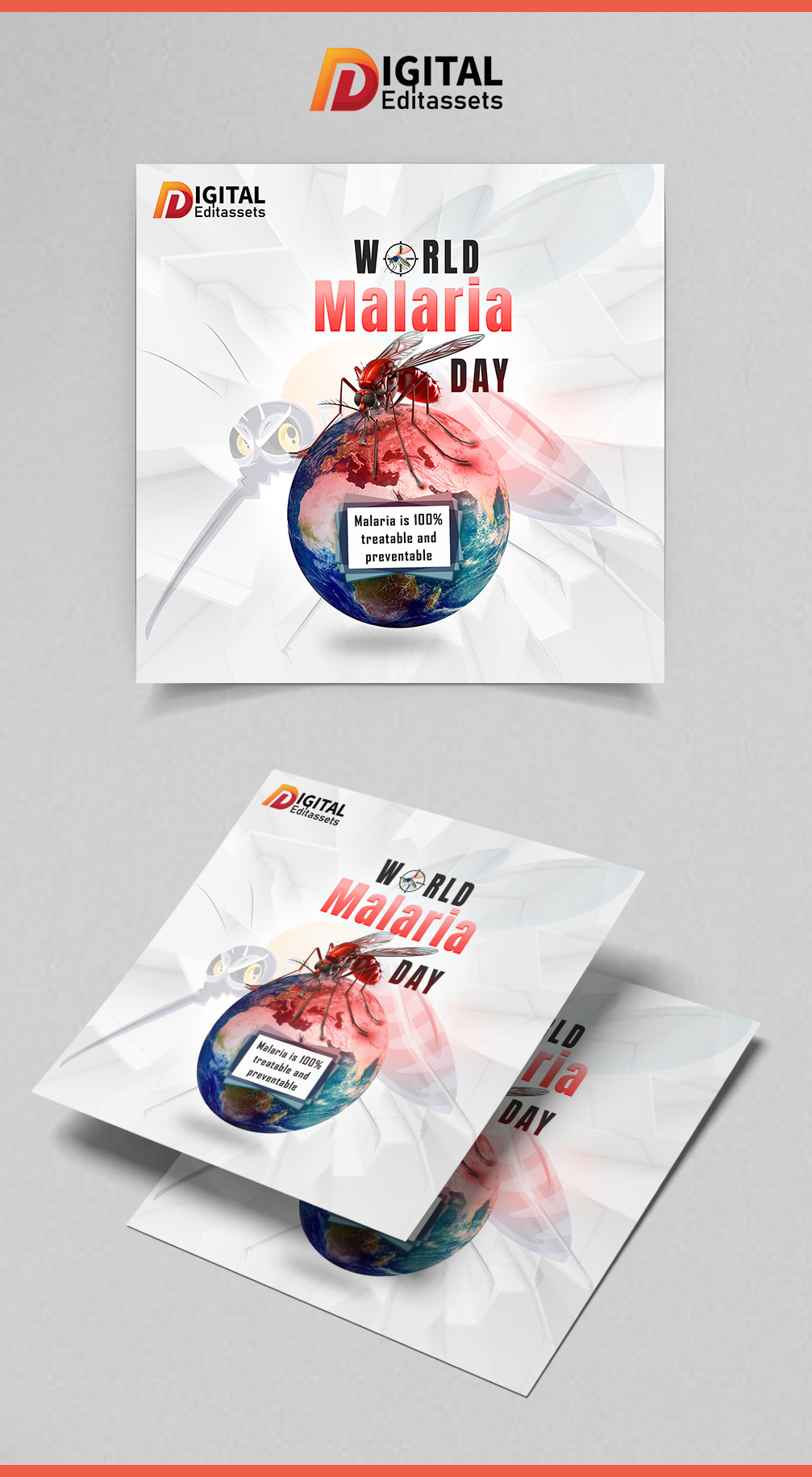
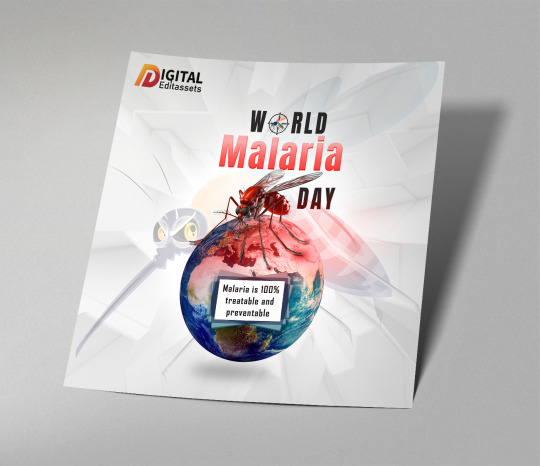
World Malaria Day PSD Template Free: Empower Your Advocacy Efforts with Our World Malaria Day PSD Template - Get Now Free.
Click on the link to download this template:
World Malaria Day PSD Template Free for social awareness
#WorldMalariaDay#PSDTemplate#FreeTemplate#SocialAwareness#MalariaAwareness#HealthCampaign#PublicHealth#MalariaPrevention#GlobalHealth#FightMalaria#AwarenessCampaign#GraphicDesign#FreeDownload#DesignForGood#CommunityHealth#designresources#graphic design#psd mockup#designfreebies#templates#digitaldesign#freemockup#packagingdesign#vector templates
0 notes
Text





On Friday, August 16, 2024, a free medical consultation camp was conducted by Mewar University Hospital at the Government Senior Secondary School in Lalas village. Approximately 100 patients benefited from this camp. Additionally, the medical team from Mewar University Hospital provided health screenings for the school’s students.
During the event, Mewar University Hospital also distributed free notebooks and pens to the students. The Principal of the Government Senior Secondary School, Rajesh Kumar Vaishnav, expressed his gratitude to Mewar University Hospital for organizing the camp.
Mewar University Hospital, Medical Superitendent, Dr. Gyan Maheshwari, stated that during the camp, Most of the patients arrived in the camp due to change in weather. Patients received free blood pressure checks, blood glucose testing, and other laboratory investigations in the camp. Free medications were also distributed to the patients as part of the camp's services.
#healthcampaign #medical #medicalcheckup #MewarUniversity #heathcare #doctors #FreeMedicalCamp #freemedicine #healthadvice #DentalCare #physiotherapy #mewaruniversityhospital #medicalstudent #healthcheckup
0 notes
Text
Local Takes on Six Triathlons in Six Counties to Promote Sepsis Awareness

Local, Fleur Harman, embarks on extraordinary journey to raise Sepsis awareness by participating in six triathlons across six counties. Read more on Hillingdon Today. #FleurHarman #InMemoryOfGina #GinasMemory #SepsisAwareness #FightSepsis #EndSepsis #SepsisPrevention #TriathleteJourney #SepsisSymptoms #CommunitySupport #TriathlonChallenge #Triathlon #Triathlons #HealthAwareness #HealthCampaign Read the full article
#CommunityHealthInitiative#FleurHarman#GinaMemorial#HarrowEvents#HatchEndTriathlon#HealthAwarenessCampaign#NoviceTriathlete#SepsisAwareness#SepsisAwarenessMonth#SepsisEducation#SepsisPrevention#SepsisSymptoms#SixSymptomsofSepsis#TriathlonChallenge#TriathlonsforCharity
0 notes
Text

World Asthma Day: Raise Awareness with Our Festival Poster App! 🌍💨
Join the fight against asthma on World Asthma Day with our festival poster app! 🌍💨 Design posters that educate, inspire, and raise awareness about asthma and respiratory health. Let your creativity be a catalyst for change as you create impactful posters that promote understanding and support for those affected by asthma.
#WorldAsthmaDay #FestivalPosterApp #AsthmaAwareness #FightAgainstAsthma #PosterDesign #HealthCampaign #BreatheEasy #RaiseAwareness
0 notes
Text
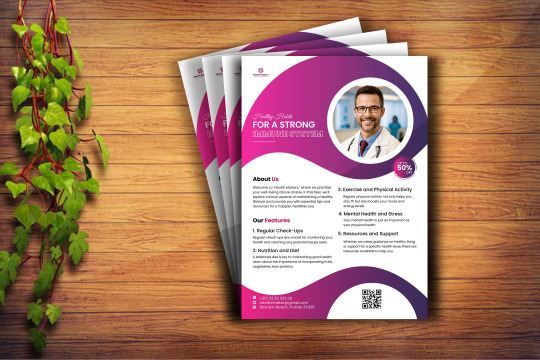
Creating an effective medical flyer Design
involves a blend of creativity, clarity, and professionalism to convey important health-related information to your audience. Here's a guide to help you craft a compelling medical flyer design:
#HealthDesign
#MedicalGraphics
#WellnessFlyer
#HealthcareDesign
#MedicalMarketing
#HealthPromotion
#PatientEducation
#MedicalVisuals
#HealthyLivingDesign
#MedicalAwareness
#HealthInformation
#DesignForHealth
#HealthEducation
#MedicalIllustration
#HealthCampaign
#PreventiveHealth
#MedicalCommunications
#HealthyLifestyleDesign
#HealthAwareness
#MedicalBranding
0 notes
Text
Lessons from the COVID-19 Response: What Public Health Campaigns Can Learn

Community Engagement: Building Trust and Participation Effective public health campaigns rely heavily on community engagement. The pandemic underscored that individuals are more likely to adhere to health guidelines when they feel involved in the process. For example, initiatives like the CDC Foundation’s “Crush COVID” campaign emphasized collaboration with community leaders and organizations to promote protective behaviors such as mask-wearing and social distancing (Foundation 2020). Engaging communities not only builds trust but also empowers individuals to take ownership of their health choices. Campaigns that incorporate feedback from community members can adapt strategies in real-time, addressing concerns and misconceptions that may arise during a public health crisis. Combating Misinformation: A Constant Battle The spread of misinformation during the pandemic has been rampant, complicating public health efforts significantly. False narratives about COVID-19 treatments and vaccine safety proliferated across social media platforms, leading to confusion and hesitancy among the public. Public health campaigns must prioritize combating misinformation by promoting accurate information through credible sources. For instance, campaigns should utilize social media not just for dissemination but also for monitoring misinformation trends and responding swiftly with factual content. A proactive approach involves leveraging multimedia across social media platforms through official verifiable accounts to flag false information and amplify trusted messages from healthcare professionals (Papendick 2024). This strategy is crucial for maintaining public trust and ensuring that accurate health information reaches those most at risk of misinformation.
0 notes
Text

World Leprosy Day
Embark on a journey of healing and hope this World Leprosy Day. Initiating treatment not only promotes healing but also halts transmission. Take the first step towards a leprosy-free world.
Reach us @ +91 44 4222 9222, +91 99400 99992, +91 44 2811 3122
Visit@ http://orthomedhospital.com
#orthomed #WorldLeprosyDay #HealingHope #LeprosyAwareness #EndStigma #LeprosyFreeWorld #TreatmentWorks #HealthForAll #GlobalHealth #InfectiousDisease #CommunityHealth #PublicHealth #MedicalAwareness #DiseasePrevention #LeprosyElimination #HealthEquality #HopeForHealing #StopTransmission #SocialInclusion #HealthCampaign #DermatologyCare #GlobalHealthInitiative
0 notes
Photo

मोरे वसाहत, पर्वती तालुका हवेली, जिल्हा पुणे, येथील गणेश मंदिरात दिनांक २२/१०/२०२१ रोजी, आधार फाऊंडेशन, पुणे आणि हीलिंग हॅण्डस फाउंडेशन, पुणे यांच्या संयुक्त विद्यमाने मोफत तपासणी आणि मार्गदर्शन शिबीर संपन्न. --------------------- मोरे वसाहत, पर्वती तालुका हवेली, जिल्हा पुणे, येथील गणेश मंदिरात दिनांक २२/१०/२०२१ रोजी, आधार फाऊंडेशन, पुणे आणि हीलिंग हॅण्डस फाउंडेशन, पुणे यांच्या संयुक्त विद्यमाने मूळव्याध भगदंर, फिशर, हर्निया या विकारां संदर्भातील व सल्गन अशा लक्षणांवर मोफत तपासणी आणि मार्गदर्शन शिबीर आयोजित करण्यात आले. कार्यक्रमाचे उद्घाटन आधार फाउंडेशन चे अध्यक्ष श्री.प्रशांत थोपटे यांच्या हस्ते करण्यात आले, कार्यक्रमास पद्मावती येथील सामाजिक कार्यकर्ते श्री. सुरज पवार व इतर सहकारी उपस्थित होते. सदर शिबिरात २४ रुग्णांची तपासणी व समुपदेशन कारण्यात आले. हीलिंग हॅण्डस फाउंडेशन, पुणे, यांच्या तर्फे सौ.पूजा राव यांनी रुग्णांची तपासणी केली व योग्य आहाराविषयी माहिती दिली, तेजश्री खलाटे यांनी समुपदेशन व मोफत औषधे वाटप केले. संस्थेच्या शिबीर व्यवस्थापक सौ.अनिता सैद यांनी शिबिराचे संपूर्ण नियोजन केले. श्री.आनंद मिसाळ, श्री.नवनाथ तळेकर यांचे शिबिरात मोलाचे सहकार्य लाभले. या शिबिरास हीलिंग हॅण्डस फाउंडेशन, पुणे च्या संस्था समन्वयक सौ.मधुरा भाटे, संस्थेचे संस्थापक-अध्यक्ष डॉ.अश्विन पोरवाल आणि संस्थापक-सेक्रेटरी डॉ.स्नेहल पोरवाल यांचे मोलाचे मार्गदर्शन लाभले. #healthcampaigns #nonprofitworks #pīles #constipationrelief #hemorrhoidtreatment #healthcareheroes #internalpilestreatment #helptheneedyones #externalpilestreatment #bleedingpiles #hemorrhoid #fistulacare #analpain #ambulancedriver #internalhemorrhoids #fissure #externalhemorrhoids #hemorrhoidtreatment #fístula #hemorroides #hemorrhoidrelief #pregnancy #hemorroids #thrombosis #straining #holistichealth #hemorroide #vaginalfistula #bhfyp〽️ #onecurestheothercare (at Padmavati) https://www.instagram.com/p/CWD2cFAMnj-/?utm_medium=tumblr
#healthcampaigns#nonprofitworks#pīles#constipationrelief#hemorrhoidtreatment#healthcareheroes#internalpilestreatment#helptheneedyones#externalpilestreatment#bleedingpiles#hemorrhoid#fistulacare#analpain#ambulancedriver#internalhemorrhoids#fissure#externalhemorrhoids#fístula#hemorroides#hemorrhoidrelief#pregnancy#hemorroids#thrombosis#straining#holistichealth#hemorroide#vaginalfistula#bhfyp〽️#onecurestheothercare
0 notes
Photo

240 notes
·
View notes